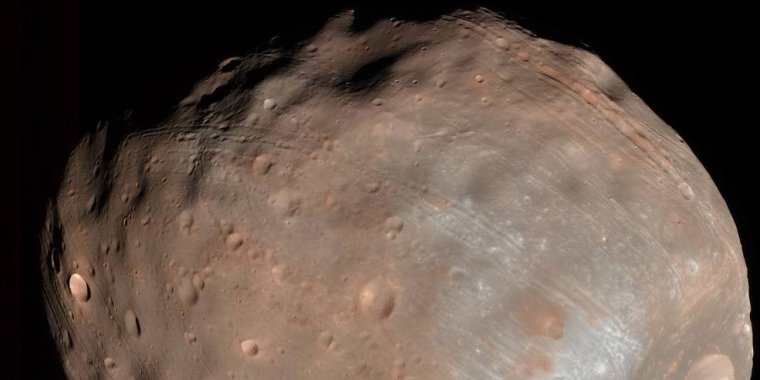| News / Space News |
Solar Eruptions Could Electrify Martian Moons
Powerful solar eruptions could electrically charge areas of the Martian moon Phobos to hundreds of volts, presenting a complex electrical environment that could possibly affect sensitive electronics carried by future robotic explorers, according to a new NASA study. The study also considered electrical charges that could develop as astronauts transit the surface on potential human missions to Phobos.
Phobos has been considered as a possible initial base for human exploration of Mars because its weak gravity makes it easier to land spacecraft, astronauts and supplies. The idea would be to have the astronauts control robots on the Martian surface from the moons of Mars, without the considerable time delay faced by Earth-based operators.
Mars has two small moons, Phobos and Deimos. Although this study focused on Phobos, similar conditions are expected at Deimos, since both moons have no atmosphere and are directly exposed to the solar wind – a stream of electrically conducting gas, called a plasma, that’s constantly blowing off the surface of the Sun into space at around a million miles per hour.
The solar wind is responsible for these charging effects. When the solar wind strikes the day side of Phobos, the plasma is absorbed by the surface. This creates a void on the night side of Phobos that the plasma flow is obstructed from directly entering.
However, the composition of the wind – made of two types of electrically charged particles, namely ions and electrons – affects the flow. The electrons are over a thousand times lighter than the ions.
The study shows that this plasma void behind Phobos may create a situation where astronauts and rovers build up significant electric charges. The team’s calculations revealed that this static charge can reach ten thousand volts in some materials, like the Teflon suits used in the Apollo lunar missions. (NASA)
YOU MAY ALSO LIKE



